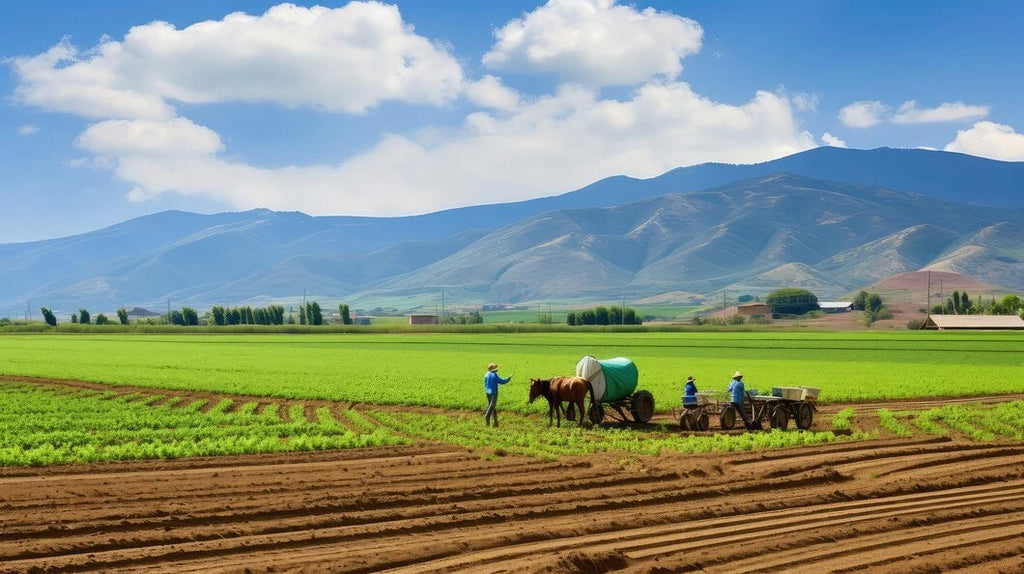Agroecology: Bringing All Stakeholders of the Environment in a Single Picture
The global agriculture and food systems are not delivering as needed on several critical sustainable development goals (SDG). Unfortunately, various studies indicate the same.
According to one of those surveys, 2021 saw 702-828 million hunger-struck people and 924 million people enduring food insecurity at severe levels. Adding insult to injury, about 670 million people will remain malnourished in 2030. On the flip side, modern agriculture - evolved throughout the 20th century - has enabled at-scale food production but at a high environmental cost. Today, some environmental burdens, including soil quality degradation due to massive pesticide use, homogenization of soil crops, and loss of biodiversity, exist partly due to intensive agriculture. Unsurprisingly, the scientific community agrees.
These numbers and trends hint at a pressing need for a worldwide switch to sustainable agriculture ensuring food and nutrition security for all while reversing ecological damage and embracing climate change.
Rising in prevalence among farmers, agroecology presents an alternative agricultural paradigm where eco-friendly concepts and processes are applied to farming.
What is Agroecology?
Agroecology is about integrating ecological and social principles into designing and managing agricultural production systems. It blends scientific and local expertise to optimize interactions between humans, animals, plants, and ecosystems. Simultaneously, it addresses the need for socially equitable food systems wherein people decide what they eat and how and where it is produced.
Agroecology’s essence lies in the understanding that an agricultural system should replicate the local ecosystem with complex structures, healthy nutrient cycles, and optimal biodiversity.
To meet this feat, agroecological practitioners promote crop diversification with techniques, such as regenerative agriculture, organic farming, and certain aspects of permaculture, that contribute to sustainable development.
The 10 Principles of Agroecology
Agroecology is composed of ten vital principles which are interdependent and interlinked. These elements elaborate on underlying components, critical interactions, emerging characteristics, and desired enabling conditions in agricultural methods.
- Diversity - addresses the socioeconomic, ecological, genetic, and nutritional heterogeneity of agricultural systems.
- Co-creation and Sharing of Knowledge - combines traditional and indigenous knowledge with scientific expertise.
- Synergies - integrated, holistic approaches to tackle agricultural and food system challenges.
- Efficiency - mindful usage of natural resources over costly and unsustainable inputs.
- Recycling - emulates ecological processes to curb pollution, waste, and nutrient loss.
- Resilience - enhances the ability to negotiate climate shocks, natural disasters, and economic downturns.
- Human and Social Values - prioritizes equity, dignity, inclusion, and justice.
- Culture and Food Traditions - supports healthy, diversified, and culturally appropriate diets.
- Responsible Governance - entails accountable, transparent, and inclusive laws.
- Circular and Solidarity Economy - prioritizes waste avoidance, resource-use efficiency, and shortening food value chains.
Summing Things Up
Agroecology has become a buzzword over the recent past. The main question is: can agroecological farming help meet SDGs?
A growing heap of reports says yes – the technique can be a crucial response to guide the sustainable transformation of food systems. In taking up the task, agroecological approaches strengthen the sustainability of every food system component, from the soil and the seed to the table, including economic viability, environmental knowledge, and social justice.
Furthermore, they combine the global concern of ending hunger and poverty with locally implemented reforms and boost both participation and mobilization of native actors and their expertise.



